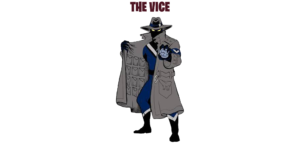Integrate Creative Thinking into your Weekly Schedule and Increase your Innovation Productivity

gets us in his extreme time pressure iron grasp and squeezes us hard twice; he steals our precious time for creativity and then provides us with logical sounding excuses to boot: ‘I just don’t have the luxury of time on my side to think about new ideas.’ I’ve got to focus on the fundamentals, the blocking and tackling and can’t be distracted from my day job.’ And the beat goes on…the beat goes on!
His Resistive Powers are:
- Extreme Time Pressures
- Unrealistic Expectations for Creative Productivity
- Distractions from Creative Work
Take these actions this week to increase your innovation productivity, strengthen your creative thinking muscle and anchor the creative habit to be repeatable!
- The creativity resistor of extreme time pressures (real and/or perceived) negatively impact our innovation productivity…if we allow it to happen. We all have many tasks to accomplish, deadlines to meet every week in our busy lives, no doubt about it. The challenge however is to not become so absorbed with the tasks that we forfeit sufficient time to think creatively. Stimulus is the lifeblood of creativity and without a consistent amount, it is difficult to generate novel and feasible thinking. So, find ways to combine tasks and integrate creative thinking into your weekly schedule. Go outside for a brisk walk and pay attention to everyday things/events that you encounter and are around you, (e.g., ask: ‘What ideas do I get from the rapids running in the stream as I walk by it?’ ‘How can I apply the dynamics of fast/slow; ever-moving; cold; deep/shallow; twists/bends to my current challenge?’ Have your idea capture system with you and write down/record the questions, the ideas and the options you generate. By adopting this technique you develop and then anchor the habit of integrating/combining creative thinking into your everyday tasks – a two-for-one combo! We can’t add additional time to our day, but we can integrate/combine creative thinking with our busy schedules…and increase our innovation productivity – one day at a time!
- The creativity resistor of unrealistic expectations for creative productivity is a two edge sword. On one side of the proverbial coin, if you set unrealistic goals and consistently fall short, it can have a deflating effect. On the flip side are high expectations – Sam Walton, the founder of WalMart said ‘high expectations are the key to everything.’ So should I call heads or tails – which is it? So how about we lean in the direction of setting high – but not unrealistic expectations for creative productivity? Set the goal high enough – e.g., generate fourteen problem statements or generate fourteen ideas this week to move forward on a challenge, problem or opportunity. Heck, that is just two per day. The art/science here is to find the sweet spot between setting the bar too high…or too low. We have to fall in once in a while to know how close to the edge we are. We don’t know our true capability until we really stretch – to go beyond our mostly self-imposed boundaries. And analogous to exercise, we build up and strengthen this muscle. Over time, we can raise the bar and generate increased numbers of problem statements and ideas. What is the point of the game if we are not keeping score?
- The creative resistor of distractions from creative work takes advantage of the reality that we all have many tasks to accomplish every week in our busy lives, not debating this one. The challenge is to not become so absorbed with the tasks, to not allow using the all to convenient excuse of busyness as a substitute for creative productivity. We all have 1440 minutes a week to use, no more – no less. It’s how we allocate and administer our time. One useful barometer is to allocate sixty minutes per day to creative work – 420 minutes per week. Just think about what you could accomplish by doing this? Conduct a time audit on where you spend your time and identify the wasteful, non-productive and distracting tasks – e.g., surfing the web, working on non-impactful tasks, etc., and using these as safe distractions. Moving forward, eliminate these distractions and stop doing non-essential tasks. This should easily free up thirty – sixty minutes a day – providing you with adequate time to think and act creatively. This change will enable you to develop and foster a robust Play to Win Mindset where you focus in on growth opportunities and leverage your potential. Look to take smart risks – identify and wager many small bets versus a large riskier one. Creative work is inherently risky because we cannot predict the outcome, and placing many small bets helps to reduce the risk. Creative work takes courage, it is exciting, liberating, invigorating and rewarding. The choice is yours – use distractions as a cover, a shield…or be confident, get in the creative arena and innovate!